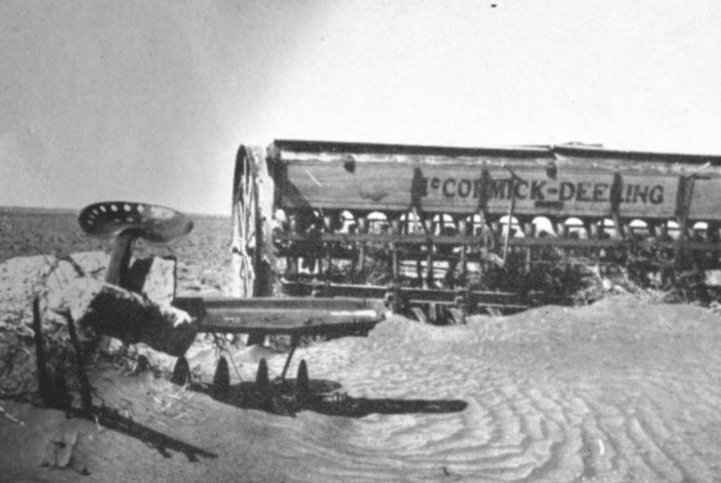Wind-blown dust piles up against abandoned farm equipment during the 1930s Dust Bowl. Photo by NOAA
July 17 (UPI) -- Climate change will bring more dust storms to the Great Plains in the latter half of the 21st century, according to the latest prediction models.
According to new models developed by climate scientists at Princeton University and the National Oceanic and Atmospheric Administration, already dry and dusty regions, like southwestern deserts and the central plains, will become drier and dustier in the second half of the 21st century. The increase in dry, dusty conditions in the southern parts of the Great Plains is expected to encourage an increase in the prevalence of dust storms.
Global warming is expected to bring warmer temperatures to most of the globe, but the impacts of rising greenhouse gas concentrations on precipitation is more nuanced and geographically dependent. Some places are likely to experience more rain, while other places will get drier.
For the latest study, researchers needed to better measure current dust storm-related factors, including the prevalence of ground vegetation and dust.
"Few existing climate models have captured the magnitude and variability of dust across North America," lead researcher Bing Pu said in a news release.
Researchers used satellite data to measure levels of leafy green coverage in dust-prone parts of the United States. Scientists also analyzed local wind speeds and precipitation models.
According to their analysis -- detailed this week in the journal Scientific Reports -- an increase in drought and deforestation across the southern portions of the Great Plains is expected to yield an uptick in dust storms. An increase in rainfall totals across the northern parts the Great Plains is expected to depress dust storms.
In the 1930s, prolonged drought and a barrage of dust storms devastated the ecology of the Great Plains and forced tens of thousands of Americans to abandon their farms.
"Our specific projections may provide an early warning on erosion control, and help improve risk management and resource planning," Pu said.















